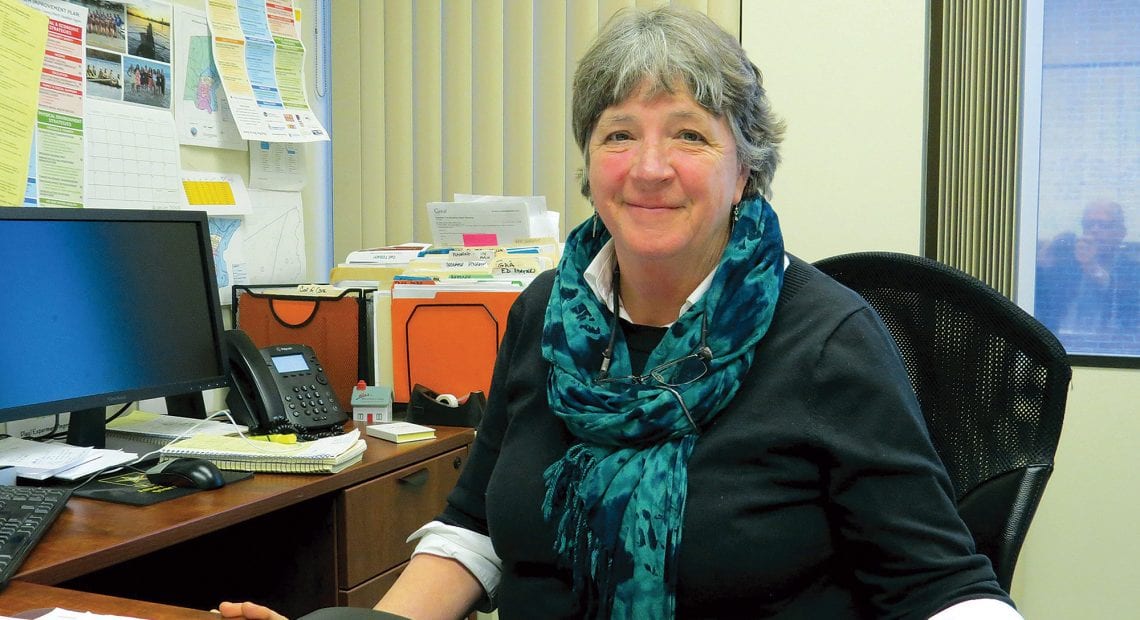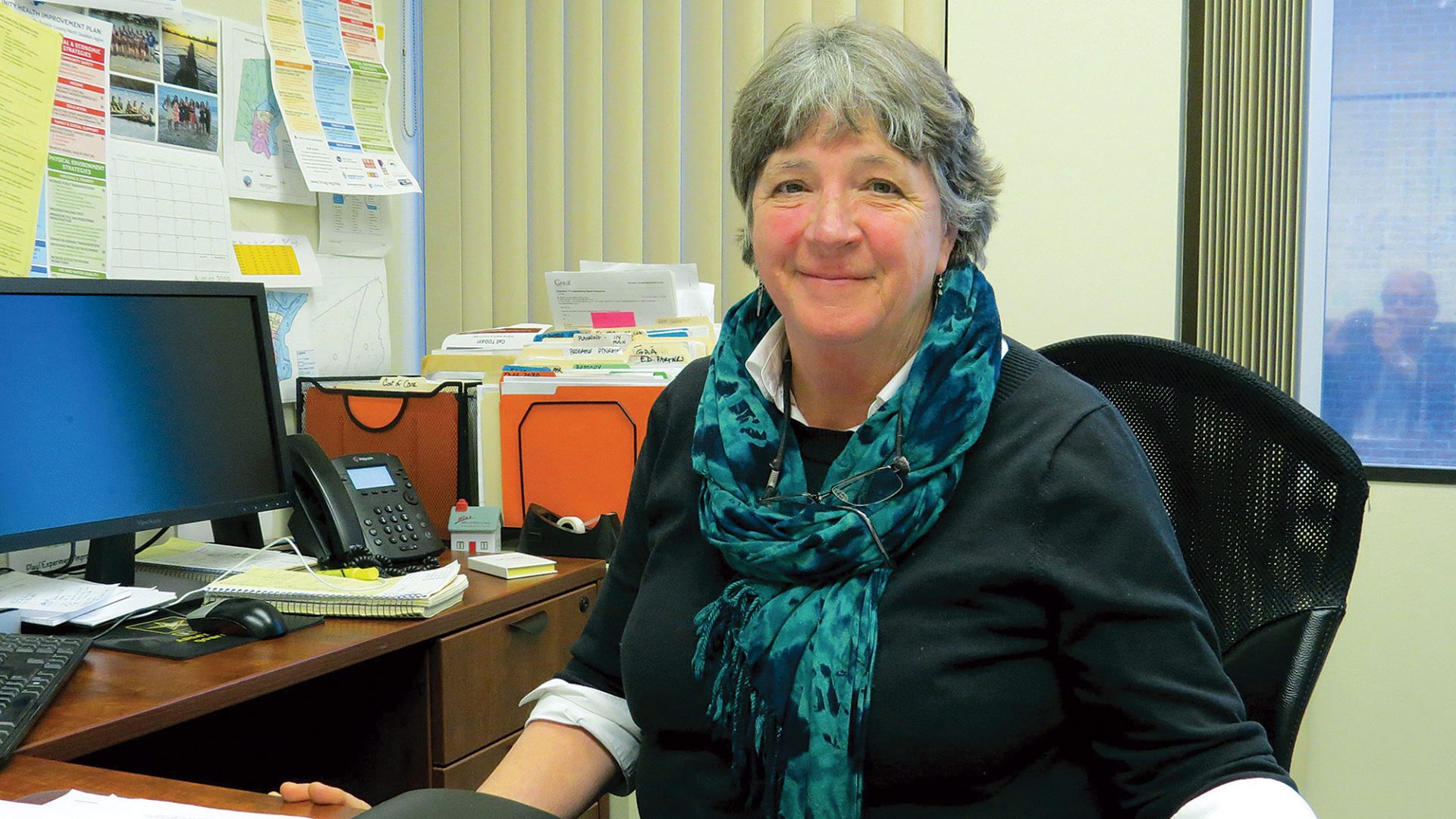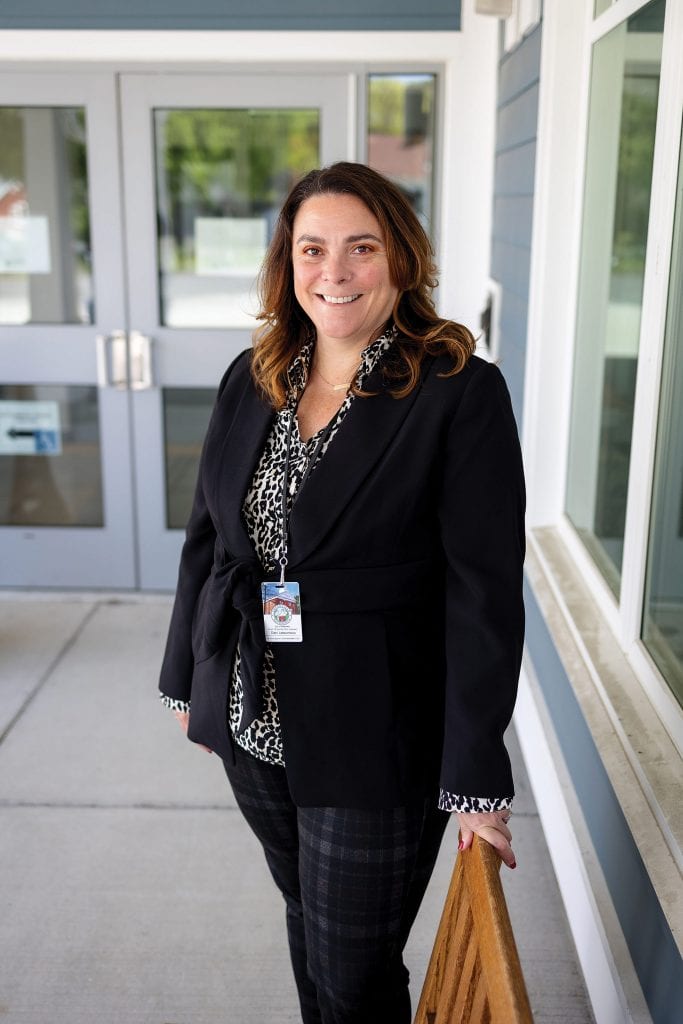
Greenfield Makes Pitch as Destination for Remote Workers
Small-city Living

MJ Adams says Greenfield’s strides in municipal broadband will boost its potential for remote workers.
At a recent briefing about potential east-west passenger rail service through Greenfield, state Sen. Adam Hinds talked about how infrastructure investments — not just in rail, but in broadband access and other realms — feels like a “build it and they will come” moment.
“We’re keenly aware we are in a critical transition, a moment of uncertainty, and it feels like we’re at a time when people are making choices about the potential to live in a region like this, or stay in a region like this, based on infrastructure development,” Hinds said, noting that ridership trends on current north-south rail would likely shift as other types of infrastructure, especially digital, come online.
“Our answer to a major disruption in our society and our Commonwealth is a major investment to make the entire community stronger, that can allow anyone to work anywhere in the world,” he added. “We need to be getting it right as we think about recovering strongly.”
MJ Adams, Greenfield’s director of Community Development, said the city has already made strides in that all-important digital realm — strides that could help position the city as a destination for people who want to keep their jobs in larger cities, but work remotely while living in a place with rural appeal, small-city amenities, and, in their mind, better quality of life.
“We felt that, not just for residents but the business community here, we needed our own municipal broadband. We didn’t realize how important that was until everyone was on Zoom.”
She was speaking of Greenfield Community Energy and Technology (GCET), Greenfield’s municipal broadband provider, which was created several years ago to meet a growing need.
“For people who require better high-speed connection, they can actually do that here now,” Adams said. “When Greenfield started building out its broadband infrastructure, that was prompted by experiences years ago, when companies turned down locating here because the internet was not very strong.
“So the city decided not to wait anymore and made a pretty big investment on the city side, making the decision that we’re not going to wait for a Comcast to come in and provide service; we felt that, not just for residents but the business community here, we needed our own municipal broadband,” she added. “We didn’t realize how important that was until everyone was on Zoom.”
John Lunt, general manager of GCET, agreed. In a Greenfield Recorder article in December, he touted GCET’s response to the pandemic — efforts that included no-charge connections for students attending school remotely — but said the utility’s role goes far beyond that.

Danielle Letourneau calls Greenfield “a small city with big-city amenities.”
“Revenues tend to stay local, and municipal broadband providers have become economic-development assets to their towns,” he wrote. “Reliable service, better pricing and customer service, local development, and control of critical infrastructure — this is what a municipal provider offers.”
Danielle Letourneau, Greenfield Mayor Roxann Wedegartner’s chief of staff, told BusinessWest that the city had the foresight to establish this service well before the pandemic made it more critical. But now, it plays a role in attracting new residents and businesses that are navigating a new world when it comes to how, and where, employees want to work.
“We’ve set ourselves up well,” Letourneau said. “We are a small city with big-city amenities. But we do have a rural feel. We even have several co-working spaces; we’re recognized already for that kind of thing as a way to attract people who want to move here.”
All these amenities open the city up for new arrivals, as well as people who grew up here and want to return and raise their own families here, especially those who can take advantage of new opportunities in remote work.
“Even before COVID hit, we looked at ourselves as being a pretty attractive city,” Adams said, and building out high-speed broadband was one way to build on that. “We were seeing ourselves as well-positioned for people who wanted a small-city feel but still wanted proximity to big cities. And we were planning it before COVID arrived.”
Then the pandemic accelerated the remote-work trend, which dovetailed well with what the city was doing, she went on. “Businesses are trying to understand how to make it work, but employees are also figuring out how it works for them. Here, they have an attractive way of life as they try to work remotely, farther afield from higher-priced communities in New England.”
Living Room
Chris Campany, executive director of the Windham Regional Commission in Vermont, told the participants in the passenger-rail meeting that “we’re seeing an odd inversion in Southeast Vermont where people are finding employment here but, because of our extreme housing scarcity, are living in Western Mass. There’s going to be a lag in the data availability, but it’s increasingly feeling like the exurban growth in the I-91 corridor has accelerated.”
He doesn’t know if that emigration will continue, but he also doubts families who have moved to Western Mass. or Southern Vermont for work or other reasons will want to uproot again after the pandemic, so there may be some staying power to these trends.
“We were seeing ourselves as well-positioned for people who wanted a small-city feel but still wanted proximity to big cities. And we were planning it before COVID arrived.”
Indeed, the real-estate market in Western Mass. has been booming, with the latest monthly report from the Realtor Assoc. of Pioneer Valley showing sales volume up 20.7% across Hampden, Hampshire, and Franklin counties from June 2020 to June 2020, and the median price up 20.4%.
But while Franklin County’s median price is up 23%, its sales actually fell by 10%, reflecting, perhaps, the shortage of homes to meet demand, which is, obviously, hiking those prices. In fact, current inventory of homes for sale in Franklin County is down 52.9% from a year ago.
Adams said Greenfield officials recognize the need for more housing, especially market-rate housing in the downtown area, noting that upper-level residential development would create mixed-use vibrancy downtown.
Understand how critical downtown is to the city’s future, municipal officials were getting ready to update the downtown revitalization plan well before the pandemic, identifying what the strengths and challenges were in the corridor, she explained. “We want to develop in a way that’s thoughtful and local and makes sense for the business community.”
Greenfield was also among the Massachusetts communities that received local Rapid Recovery Plan funding. “That helps us identify actionable plans we can put in place fairly quickly to ramp up the business community,” Adams said. “It means taking a look at both the public and private realms and the business mix and who needs to be at the table to make a comprehensive plan to breathe life back into our downtown.”
It’s a downtown, she said, that already offered entertainment in venues like Hawks and Reed Performing Arts Center and had been talking about creating outdoor dining before the pandemic accelerated that process.
“From talking to people, the draw downtown is really experience-based now versus when we were younger, and it was a place to buy goods and services,” Letourneau said. “People come here to eat out, for world-class music venues, arts, great antique shops, stuff you can’t find anywhere else. I think it’s experiential, and it’s a good feel for downtown.”
The question now is, will the city put all those pieces together, plus the draw of well-established municipal broadband, plus possibly expanded passenger rail, and become a destination of choice for an increasingly remote workforce?
“This is our opportunity now,” Adams said. “People are reassessing where they want to be and what they want to work, and they should take a look at Greenfield.”
Joseph Bednar can be reached at [email protected]




